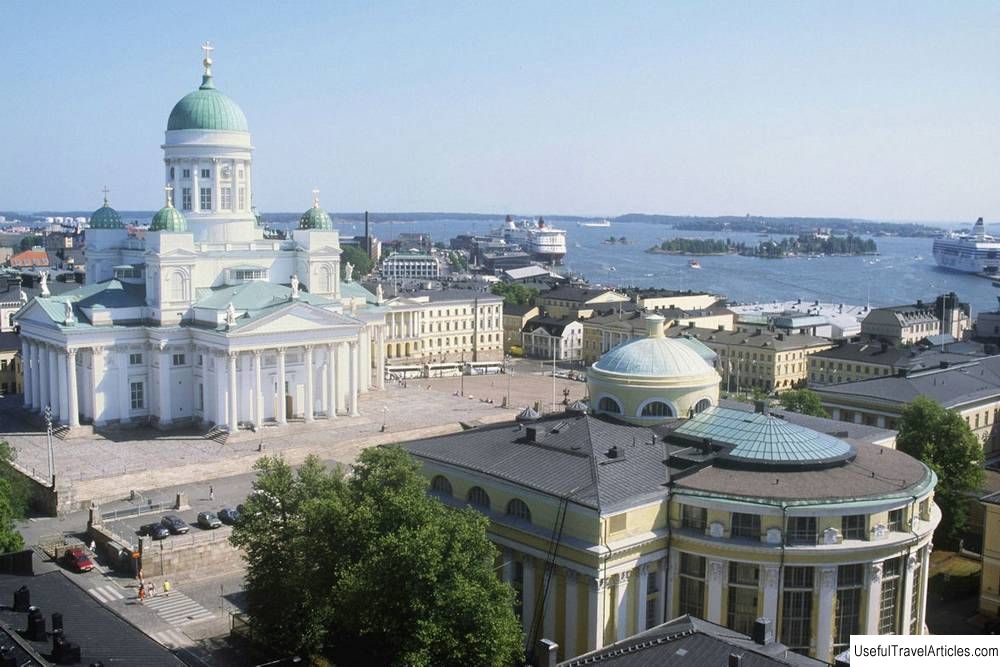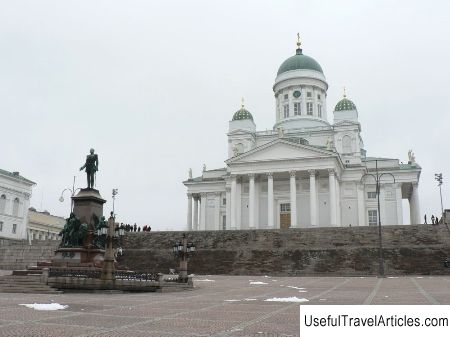Senate Square description and photos - Finland: Helsinki
Rating: 8,3/10 (8069 votes) 
Senate Square description and photos - Finland: Helsinki. Detailed information about the attraction. Description, photographs and a map showing the nearest significant objects. The title in English is Senate Square. Photo and descriptionSenate Square in Helsinki, according to the architect's plan, forms a common complex with the surrounding architectural structures. In 1812 Helsingfors (Helsinki) was given the status of the capital of the Finnish principality. The appearance of an ordinary provincial Finnish town did not correspond to its high status, and it was decided to improve it. Karl Ludwig Engel was invited to work on the appearance of Helsinki, who moved from Revel (Tallinn) to St. Petersburg in search of work. The views of the architect were clearly influenced by the classicism of the architecture of the then capital of the empire. Ludwig Engel masterfully used the natural landscape and harmoniously blended all the buildings into the space around the large hill. The Cathedral was erected on its top. The construction of the temple took 22 years - from 1830 to 1852. The architect was not destined to see his project completed, because he died in 1840. The construction was completed by Ernst Lormann. History says that in 1842 the city celebrated the bicentennial anniversary of the Alexander University, and in order to accommodate all the guests of honor invited to the ceremony, a church under construction was opened. the university hall was too small. The consecration and opening of the temple took place in February 1852. The cathedral was consecrated in the name of St. Nicholas of Mirliki. The temple, at the behest of the autocrat, was decorated with zinc sculptures of 12 apostles. Inside there are statues of the founder of Lutheranism Martin Luther, the humanist Philip Melanchthon and the first translator of the Bible into Finnish - Bishop Mikael Agricola. In 1917, after Finland gained independence, the cathedral was called Suurkirkko (large church). The status of a cathedral received in 1959, together with the founding of the Helsinki diocese. On the square itself there is a monument to Alexander II. The Finns treat this Russian emperor with respect: autonomy was observed during his reign in Finland, its own currency was introduced, and the Finnish language was given the status of the state language. If you stand with your back to the cathedral, on the left you can see the former Senate building, from which the square got its name, also built according to Engel's project. Currently, it houses the Council of State - the government of Finland. Opposite the government building is the University building, which is almost its twin. The history of the University of Helsinki begins with the transformation of the Turku gymnasium into the Royal Academy. After a fire and natural disaster in 1827, the academy was transferred to Helsinki and was located partly in the Senate building, partly in temporary buildings. In 1832, the educational institution moved to a new building, and in 1845 the construction of the library was completed. The library's collections were collected from 6000 volumes of the Senate Assembly. The collections were replenished with donations from patrons and gifts. The electrification of the building in 1893 helped extend the work, and the opening of an additional room with reference literature attracted readers. In 1906, the Rotunda or book tower was built. all the literature simply did not fit. In the 50s of the 20th century, a huge underground book depository was built, which contains microfilms and prints. The University Library of Helsinki is renamed the National Library of Finland and is open to visitors. Inside you can see a domed hall, wall paintings from 1881, columns, and also the Rotunda. Farthest from the Cathedral are the houses of wealthy citizens of the 18th century. Of interest is the Sederholm House, which currently functions as a Museum of Merchants' Life, as well as a place for traveling exhibitions.             We also recommend reading Crypt of the Volumni family (Ipogeo dei Volumni) description and photos - Italy: Perugia Topic: Senate Square description and photos - Finland: Helsinki. |




